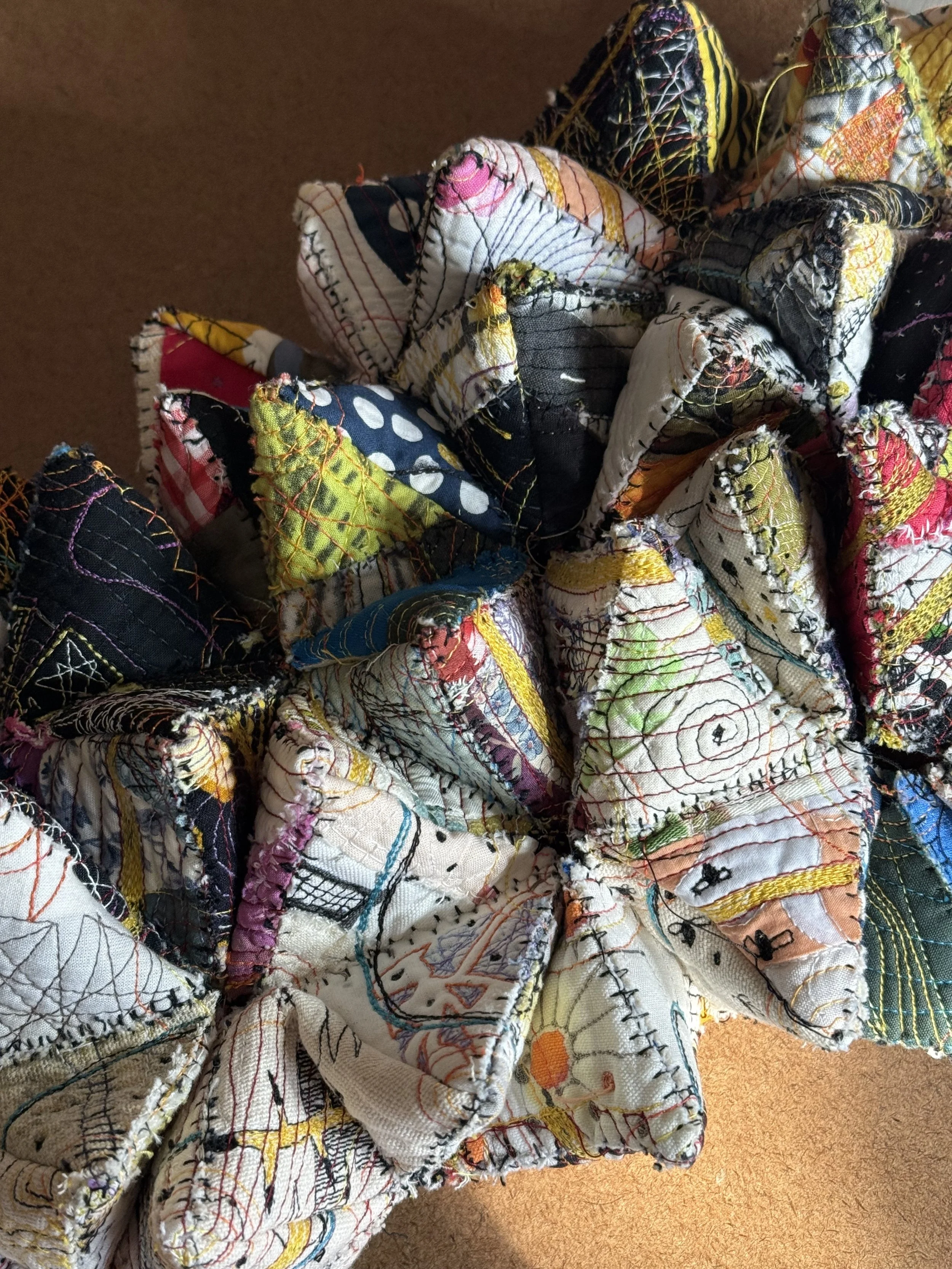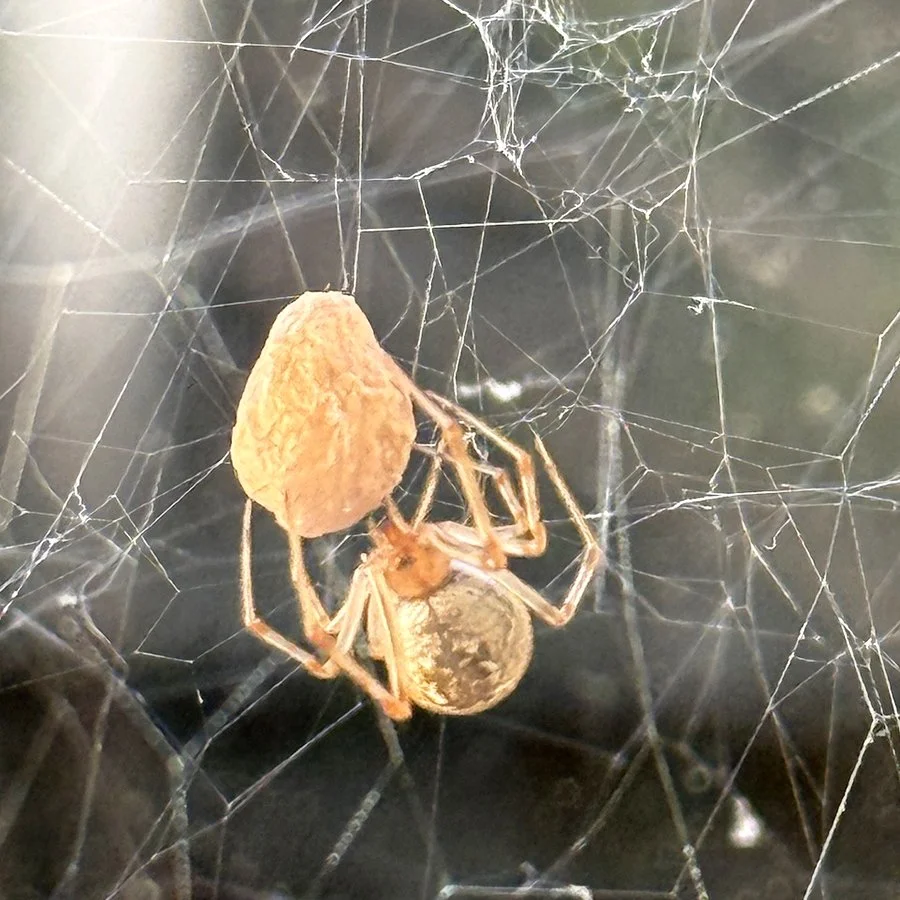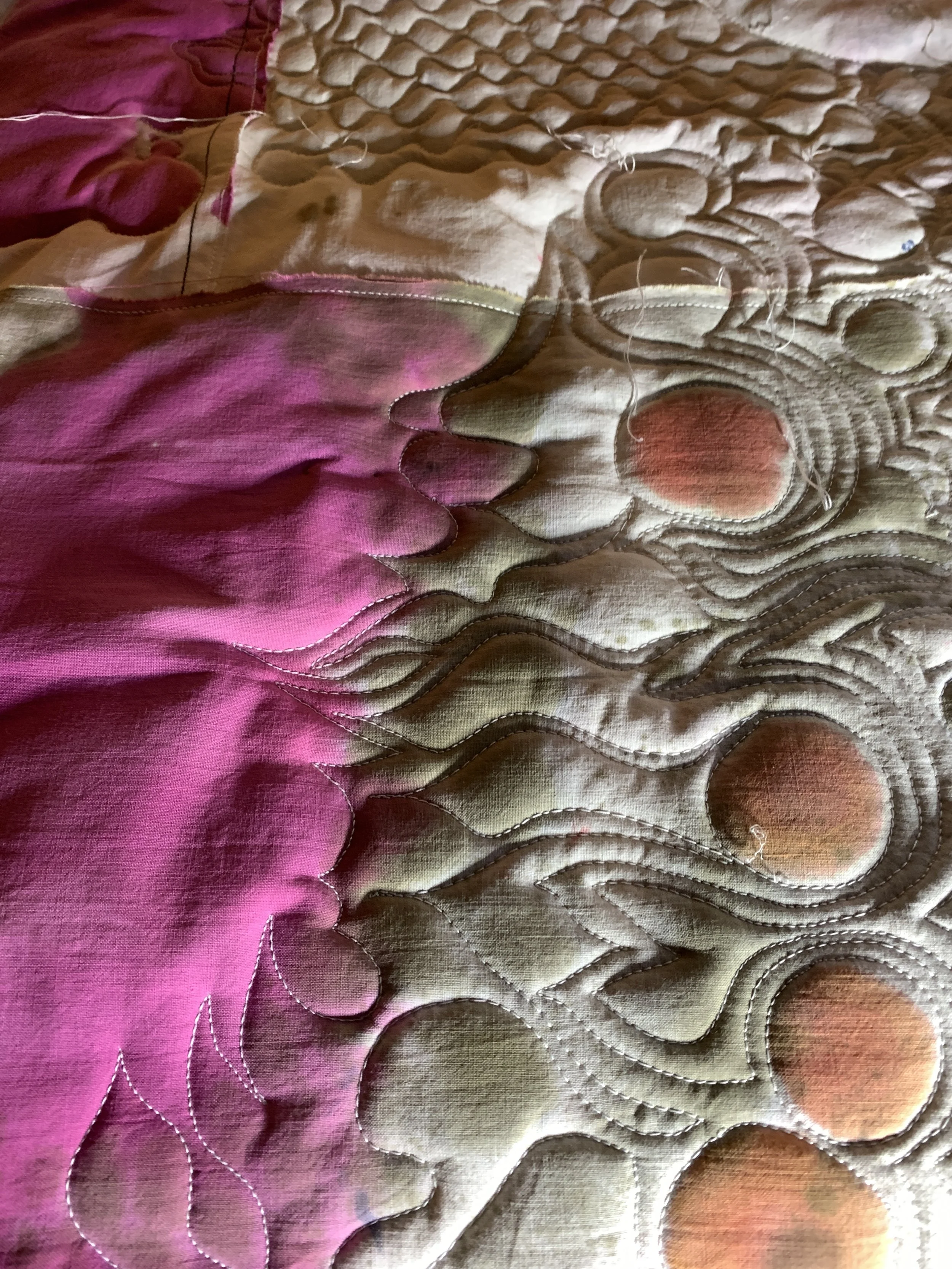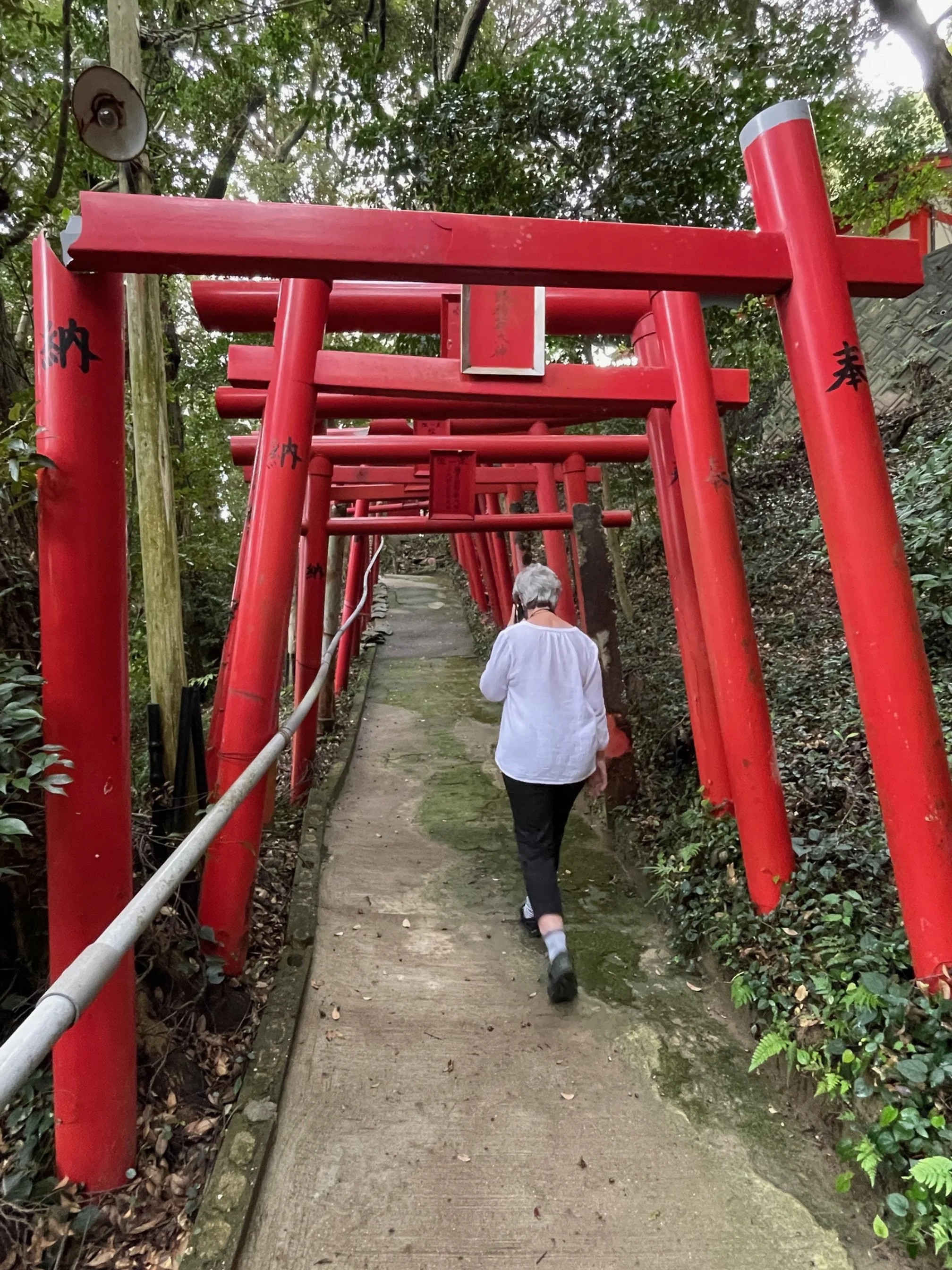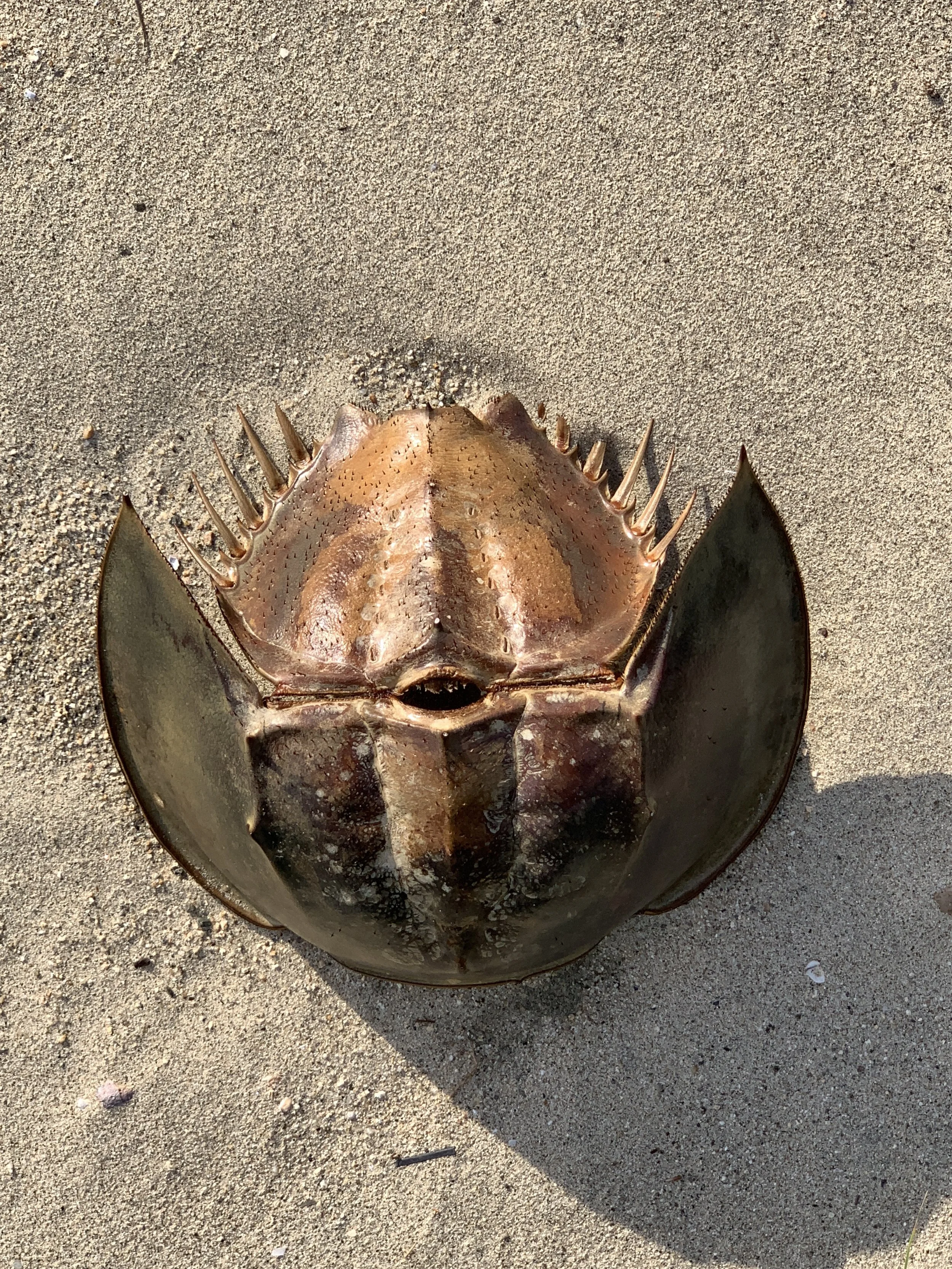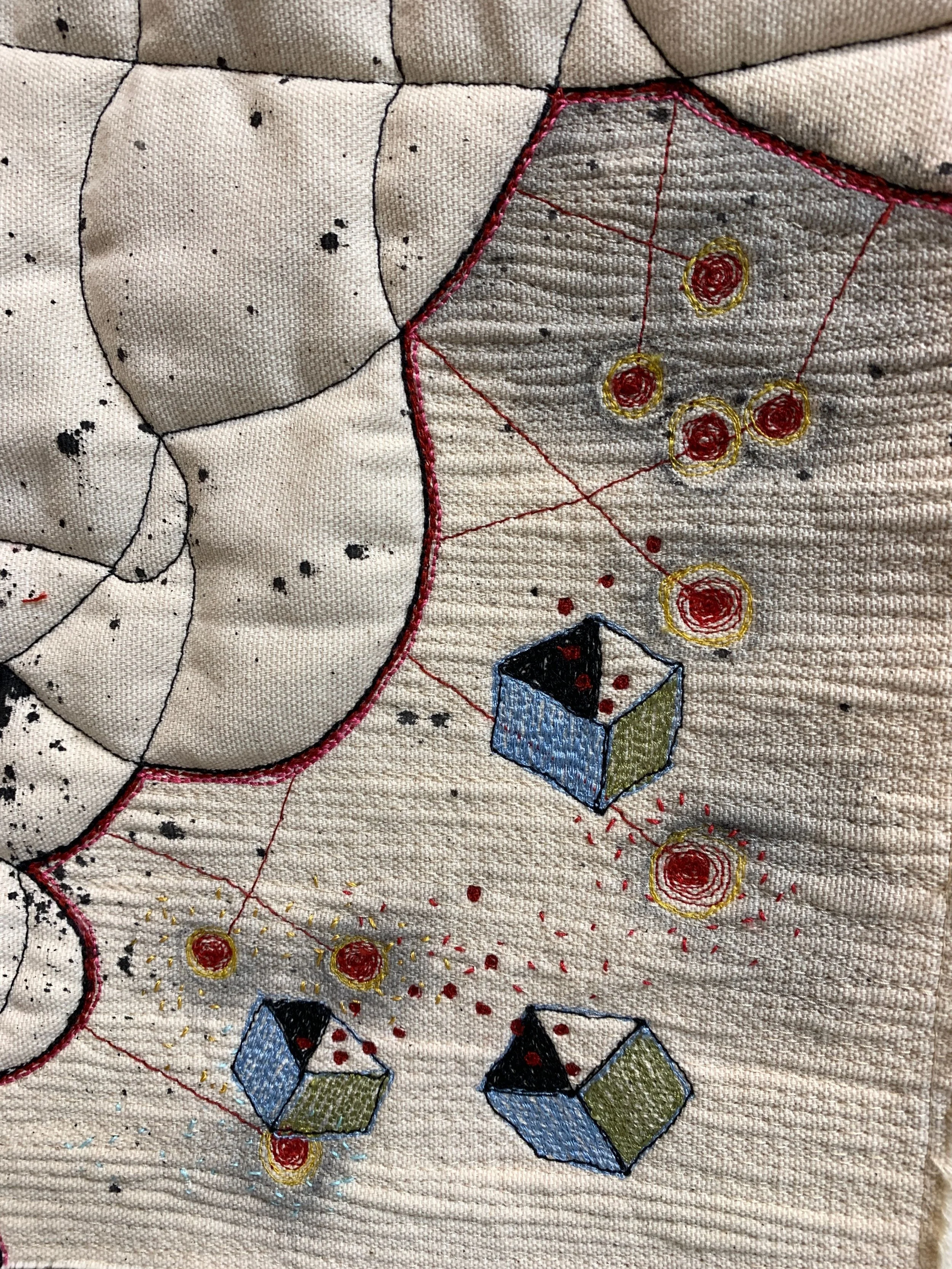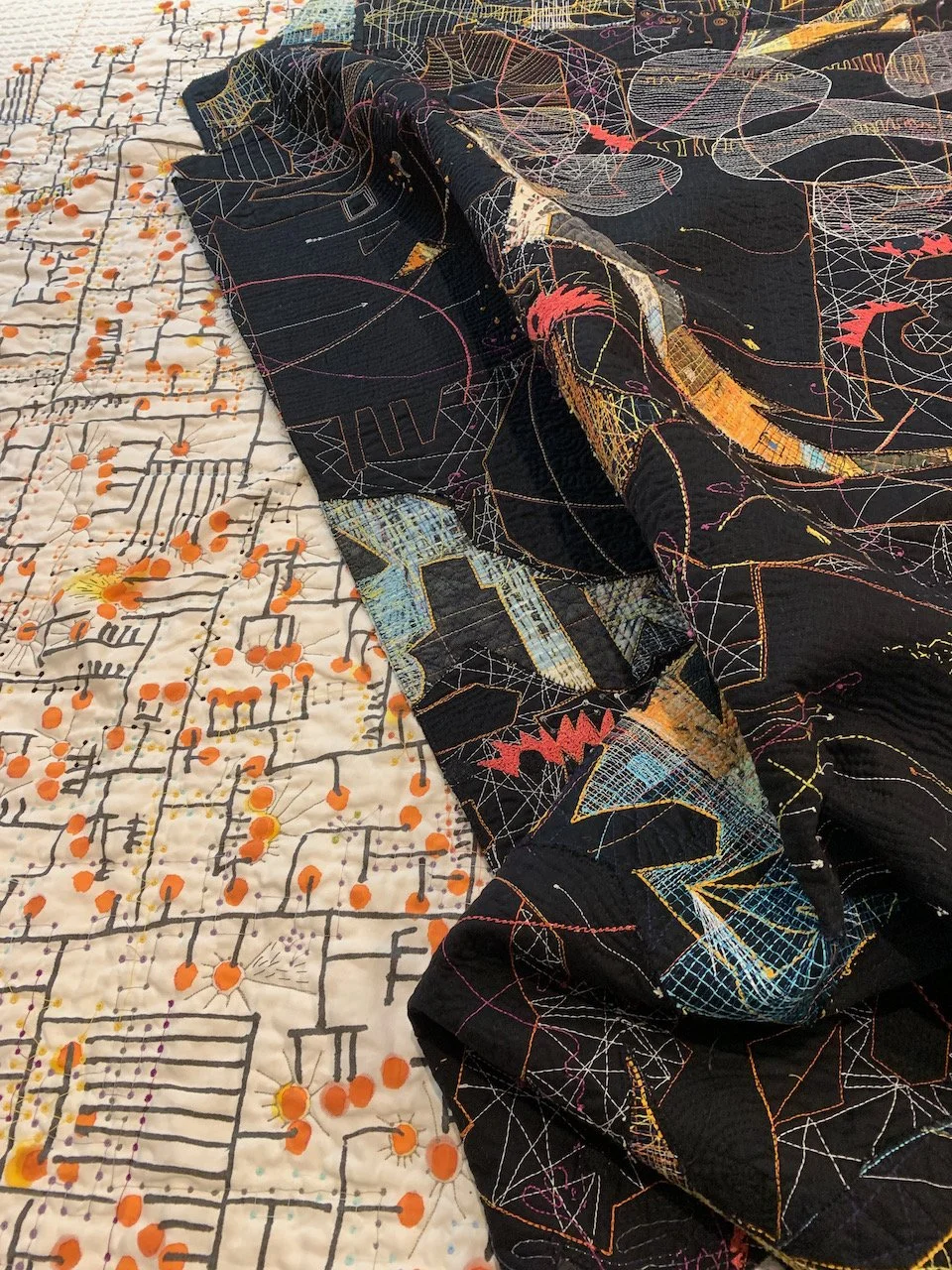Continued reading and research about refugee populations reveals a consistent discussion about building fences. To keep people out. To keep people in. Made of barbed wire, chain link, bricks and mortar or fabricated steel these fences are inhumane and daunting for those who seek safety, or food, or family. Whether it is between Mexico and the US or Hungary and Serbia the fences foster enmity, strife and violence. Guards with automatic weapons treat children as criminals. Countries stop talking about solutions and focus on defense. As these refugees encounter the barriers their lives are lost trying to find protection from thugs, food for their families, jobs for themselves.
As part of a study on this topic I am creating a piece that begins with a stitched tablecloth (see more about that here). I want to add a fence to the piece without obscuring the stitching beneath. I experimented with various materials including an actual section of chain link laid on top of the tablecloth (hmm...how to trim the edges?). I hand knotted a web of thread using a fisherman's guidance for fishing nets, in three different weights.
I built a jig that would allow me to string thread through a grid to create a fence of thread (which I thought I could hit with a solution of white glue to stiffen the gridded thread) and finally, I thought maybe I could just draw it on. None of these solutions worked. So the piece has lingered in my peripheral vision.
Until yesterday when I saw a collage by an artist who was layering textural elements over each other. The result looked like peeling paint. Not my goal. But the layering did spur an idea of how I could accomplish my goal of adding a fence to the piece.
Fences are solid, immutable objects that define space. But there are other types of fences that we erect that affect our lives. Those of fear, racism, anxiety and nationalism to name a few. Governments use laws and decrees to exclude or include. People sort their lives by choosing and defining groups that are acceptable and unacceptable to them. Voting districts are defined by those in power.
Fences can be solid or diaphanous, made of steel or made of prejudice.
I decided I would create a layer for this piece in progress. I printed out my drawing of the structure and taped it to a foam board. Layering the drawing with tulle that is stabilized on the back of the board I am weaving a silver thread through the tulle to create a subtle fence that can be cast over the stitched base.
We'll see if this works.
